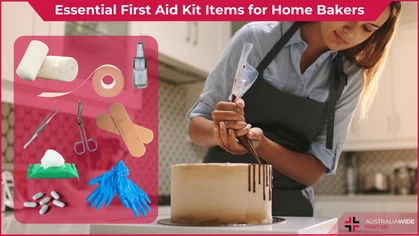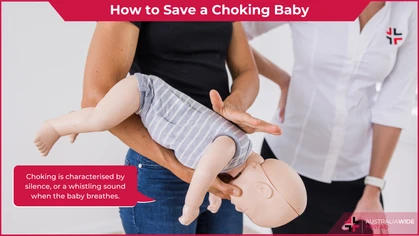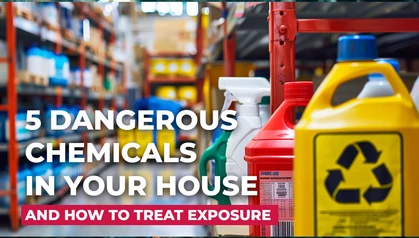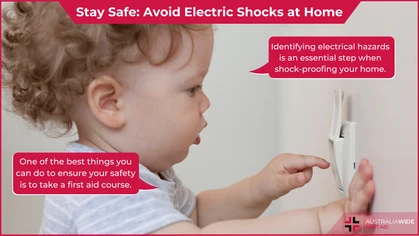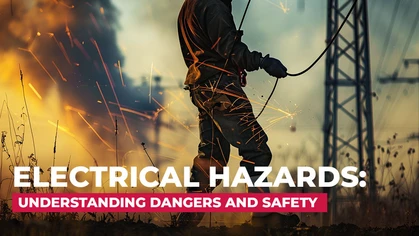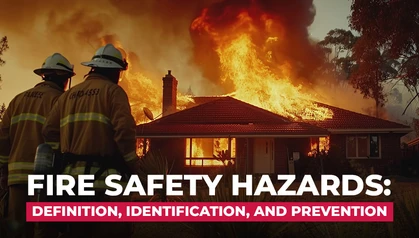Common House Party Injuries

Danger
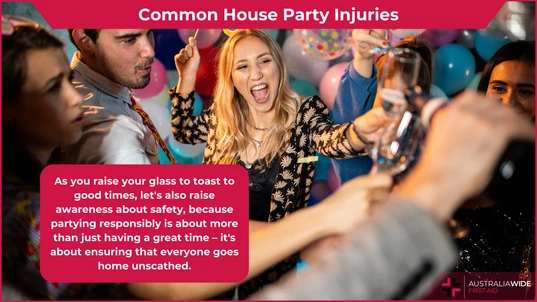 House parties can be a lot of fun, but they can also sometimes lead to accidents and injuries.
Whether it's a casual get-together, a birthday bash, or a festive holiday gathering, these events can be filled with laughter, music, and countless memories.
However, amidst the revelry, there is an often-overlooked aspect of house parties - the potential for accidents and injuries.
From slips and falls to accidents in the kitchen, the dynamics of a party can sometimes give rise to unexpected mishaps.
In this article, we will explore some of the common injuries that can occur at house parties, offering insights on how to prevent them, ensuring that your next soiree remains a joyful and safe occasion for all.
So, as you raise your glass to toast to good times, let's also raise awareness about safety, because partying responsibly is about more than just having a great time – it's about ensuring that everyone goes home unscathed.
House parties can be a lot of fun, but they can also sometimes lead to accidents and injuries.
Whether it's a casual get-together, a birthday bash, or a festive holiday gathering, these events can be filled with laughter, music, and countless memories.
However, amidst the revelry, there is an often-overlooked aspect of house parties - the potential for accidents and injuries.
From slips and falls to accidents in the kitchen, the dynamics of a party can sometimes give rise to unexpected mishaps.
In this article, we will explore some of the common injuries that can occur at house parties, offering insights on how to prevent them, ensuring that your next soiree remains a joyful and safe occasion for all.
So, as you raise your glass to toast to good times, let's also raise awareness about safety, because partying responsibly is about more than just having a great time – it's about ensuring that everyone goes home unscathed.
Slips and Falls
Spilled drinks, wet floors, or cluttered areas can lead to slips and falls. These can result in injuries such as sprains, strains, and fractures. Clearing away clutter, and cleaning spills immediately are the best way to prevent this hazard.Burns
Cooking mishaps, handling hot objects, or playing with fire can result in burns. This includes burns from stovetops, ovens, candles, or even fireworks. Burns from cigarettes can also be common. Ensuring that you have burn gel or cream in your first aid kit will aid you in the unfortunate event that a burn should occur. Remember to put the burn in running cool water for at least 20 minutes to help stop further burning from occurring before applying any burn gel or cream.Cuts and Lacerations
Broken glass, sharp objects, or even knives in the kitchen can lead to cuts and lacerations. People may accidentally step on broken glass or cut themselves while trying to open a bottle, for example. Clearing away any broken glass immediately is the most effective way to reduce the risk. Should someone receive a cut or laceration, be sure to wash it clean and use Band-Aids or bandages to cover the wound.Alcohol-Related Injuries
Overconsumption of alcohol can lead to various injuries, including alcohol poisoning, falls, and accidents. People may also engage in riskier behaviour under the influence, such as attempting dangerous stunts, driving while impaired, or engaging in risky behaviour that can result in accidents or injuries. Being able to recognise alcohol poisoning is vital. Knowing when to call for an ambulance or get someone to hospital will reduce the long-term impact of alcohol poisoning.Physical Altercations
Arguments or disagreements can escalate into physical altercations. These can lead to injuries such as bruises, black eyes, or more serious harm. Never hesitate to call for police if a party situation becomes unsafe, especially if there are minors.Food Poisoning
Improper food handling and storage can result in foodborne illnesses. Symptoms include vomiting, diarrhoea, and abdominal pain. You can prevent this unfortunate occurrence by ensuring that all food, including snacks, are handled properly. Hot food should be heated appropriately and served immediately.Allergic Reactions
If guests are not aware of food allergies or intolerances, consuming allergenic foods can lead to allergic reactions. Similarly, if the party is occurring outdoors, there is the potential for insect bites and stings, and exposure to hazardous plants. Keeping antihistamines in your first aid kit can be handy, as can an Epi Pen. Knowing how to perform CPR can be life-saving in the event of an anaphylactic reaction.Choking
Choking can occur when people consume food or drink too quickly or without paying proper attention. It's essential to be cautious with foods that pose a choking hazard, like nuts or small items. Knowing how to respond to a choking incident can save that person’s life.Drug-Related Incidents
The use of recreational drugs at a party can result in various health issues or accidents. Drug overdoses can be life-threatening, so knowing how to respond is critical.Trips and Bumps
Clutter, poor lighting, or decorations can lead to trips and bumps, resulting in minor injuries. Ensure there are clear walkways throughout the event location, and adequate lighting in more hazardous areas such as stairways.Drowning
If a party involves a pool or other water features, there is a risk of drowning, especially if alcohol is involved. Being able to recognise drowning can be difficult, as it doesn’t look like a dramatic thrashing. Rather, the person will be vertical, with the water up to their chin, a very intense expression. Learn more here.Electrical Shocks
Parties may involve the use of electronic equipment, and improper handling can lead to electrical shocks. Preventing shocks can be as simple as doing a check of all of the cables and equipment beforehand, using effective cable management techniques, and making sure there are no liquid spills nearby.Staying Safe
To minimize the risk of these injuries at house parties, it's important to encourage responsible alcohol consumption, ensure safety measures are in place (e.g., proper lighting, fire safety precautions). Keeping a well-stocked first aid kit can help you manage minor incidents, or care for those in need while waiting for emergency services in the even of a medical emergency. It is advisable that every attendee be prepared to handle medical emergencies if they occur. If you are planning to host parties, keeping your first aid certificate up to date is a responsible move. Hosting parties in a responsible and well-planned manner can help reduce the chances of these injuries and create a safe and enjoyable atmosphere for everyone.
Originally published at
https://www.australiawidefirstaid.com.au/resources/common-house-party-injuries
as part of the Australia Wide First Aid Articles Library



